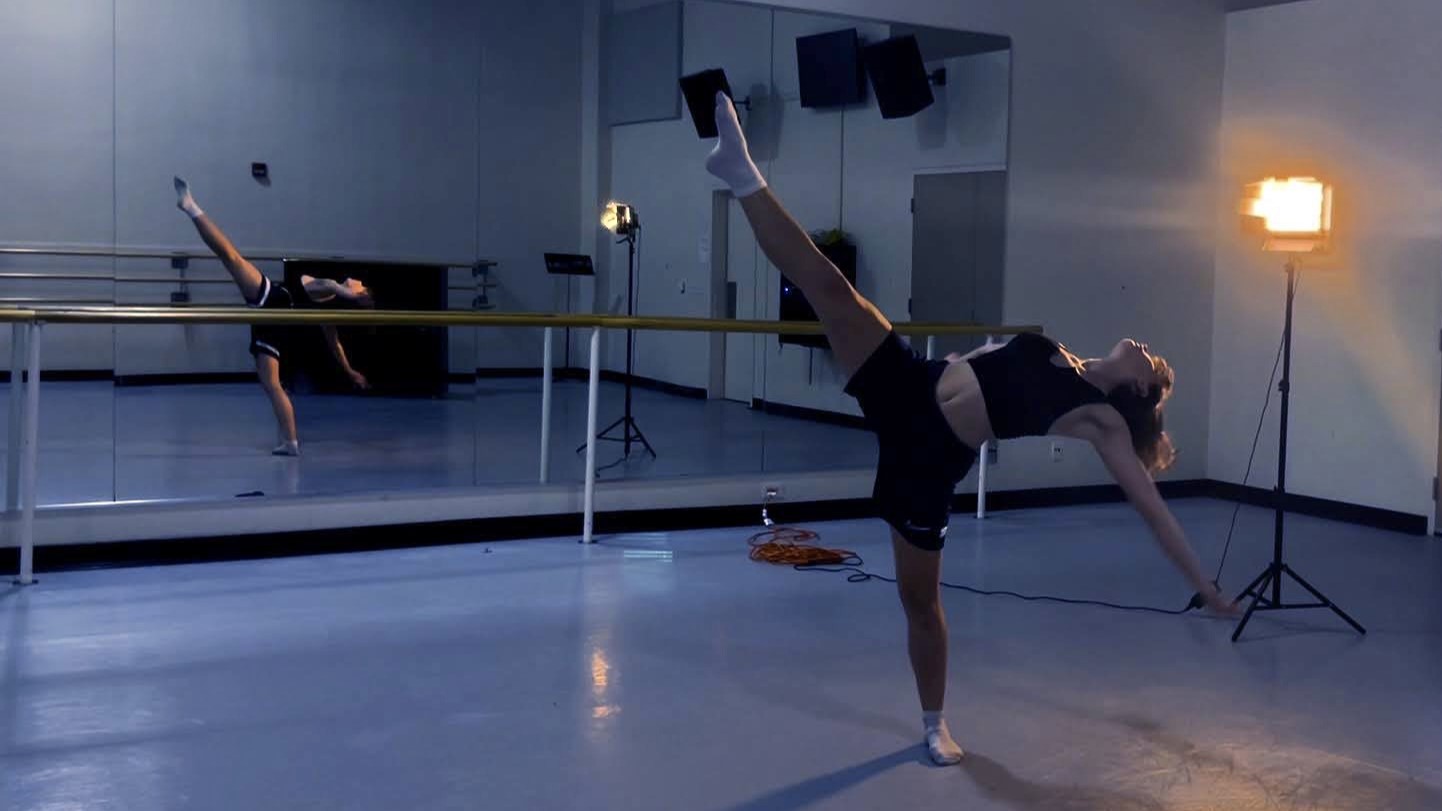
Moving Forward
One Pre-Professional Dancer’s Path to Creative Expression, Despite Chronic Health Conditions.

Gigi Rood has always known that she wanted to pursue a dance career. From an early age, she trained in a Russian-style ballet conservatory in Atlanta, Georgia. Under strict training, she grew up thinking that classical ballet was “the epitome of dance.” However, after fifteen seasons of ballet, Gigi began to feel suffocated in such a structured and rigid form of dance. In classical ballet, she explained, there’s a “right way to move and a wrong way to move.” Ballet training felt like “being poured into a mold.” So, as a teenager, she tried out contemporary dance for the first time and soon fell in love with its freedom of creative expression.
“Every single contemporary dancer carries their own technique within them, and it’s just so freeing.”
-Gigi Rood
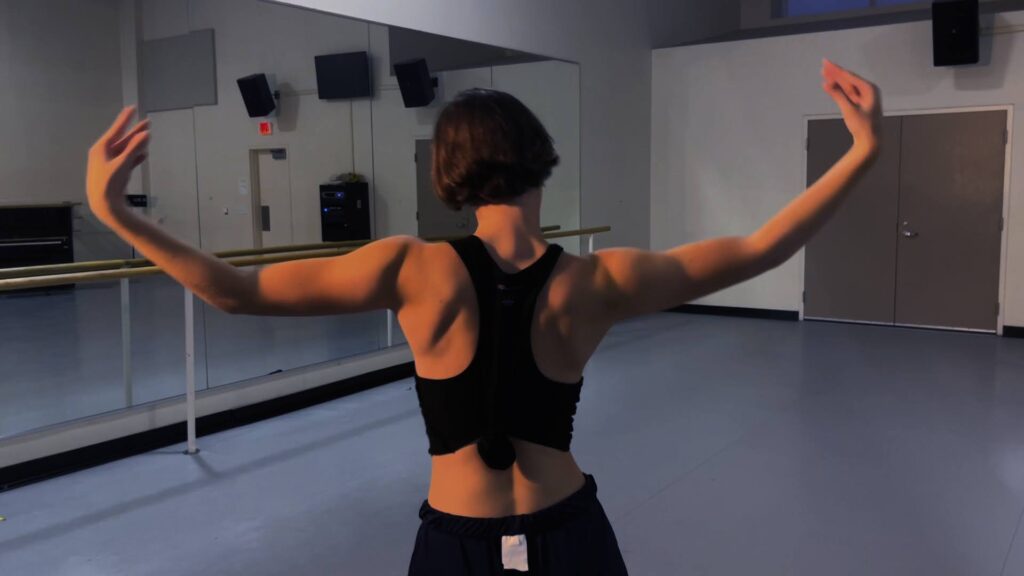

The discipline of contemporary dance meshes ballet with modern dance, and through less rigid movements, allows for expressive, emotional compositions. Contemporary dance is sometimes improvisational, and always emotional. For Gigi, this embrace of contemporary technique initially meant embracing explosive movements: jumps, leaps and turns. Excited by this newfound passion, Gigi decided to major in Contemporary Dance at the University of North Carolina School of the Arts Dance Conservatory, a prestigious program far from her home state. The program regularly sees graduates transition into careers as professional dancers and choreographers.
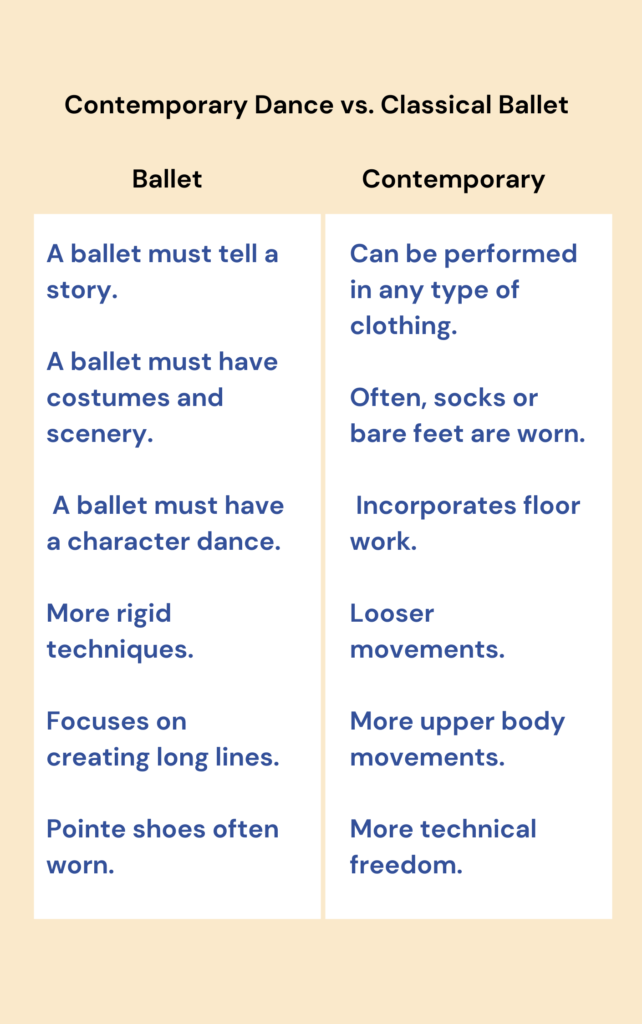
Though contemporary dance technique is looser and more interpretive, this doesn’t mean that preprofessional training is any less intense than ballet. At the UNCSA Dance Conservatory, Contemporary Dance majors are required to participate in dance classes for up to eight hours per day, at least five days per week. During weeks leading up to major shows, these hours can be even longer. Daily classes include technique classes, musicality classes, and cross-training in other disciplines of dance. And no matter the class subject, dancers engage in hours of rigorous physical movement, and must participate in yearly juries in front of the faculty to keep their spots in the program.
Because a dance student’s education depends on their body’s physical fitness, dancers in the program are held to a high standard of health as well as technique. Students undergo semesterly weight checks and are encouraged to take care of their bodies and attend physical therapy provided by the university. However, when a dancer does become sick or injured, they are still required to attend class and participate. Since a lack of attendance results in a plummeting grade and a loss of performance opportunities, many dancers choose to continue to work even when they are injured.

This is the situation in which Gigi finds herself this year in the program. Gigi is immunocompromised, which means she is susceptible to viruses and illnesses. She often contracts respiratory illnesses which make it difficult for her to breathe and exercise. In addition, Gigi has been clinically diagnosed with postural orthostatic tachycardia syndrome, or POTS, which causes her to faint often, usually daily. Because of these conditions, there are certain days or portions of days where Gigi is unable to dance due to lightheadedness and fainting. However, due to the program’s strict attendance protocol, she often finds herself pushing through her symptoms and attending her rigorous classes anyway so that her grades will not be affected. This causes her symptoms to worsen, which makes her more susceptible to injury. She even once sustained a concussion during rehearsal from falling.
Gigi has found that apart from university-provided physical therapy, there is little infrastructure within the dance conservatory meant to help sick dancers. Dancers are expected to just be strong, push through their injuries and illnesses, and keep working.
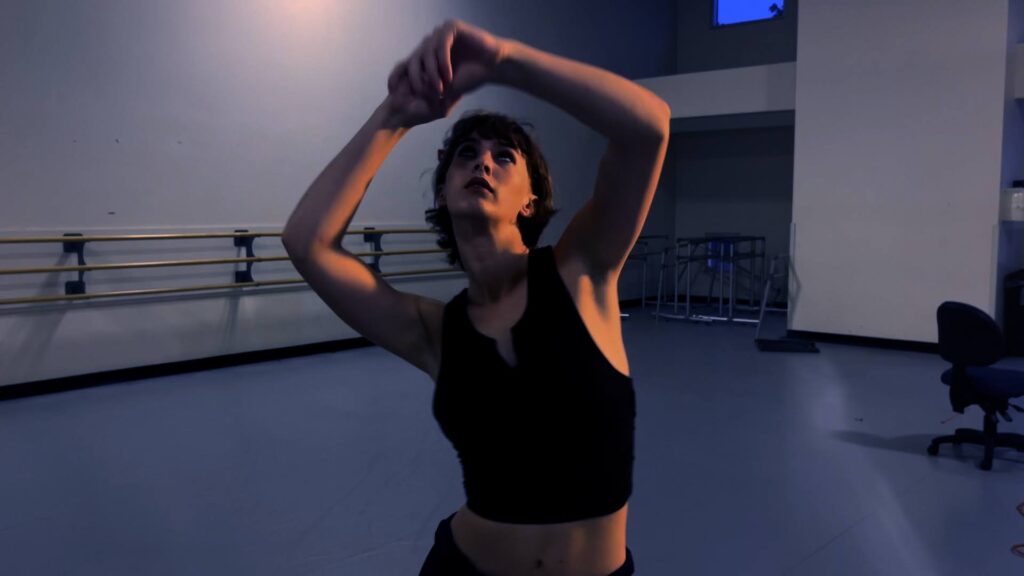
“There’s not much support. There’s not really any protocol for helping students who are immunocompromised or who are ill or who have certain health or anatomical difficulties with dance.”
-Gigi Rood
Even though her health issues put her at high risk, this susceptibility to injury is not a problem unique to Gigi. In fact, there is a high level of risk for all pre-professional dance students. Due to the intense nature of dance conservatory programs, most pre-professional students sustain at least one injury every single year of training, even when they are not immunocompromised or suffering from prior health conditions. With each injury, dancers risk permanently being ejected from their programs or missing out on the beginnings of their professional careers. Furthermore, with each injury, dancers in Gigi’s program find their GPA’s dropping, which negatively affects their abilities to change programs or transfer universities.
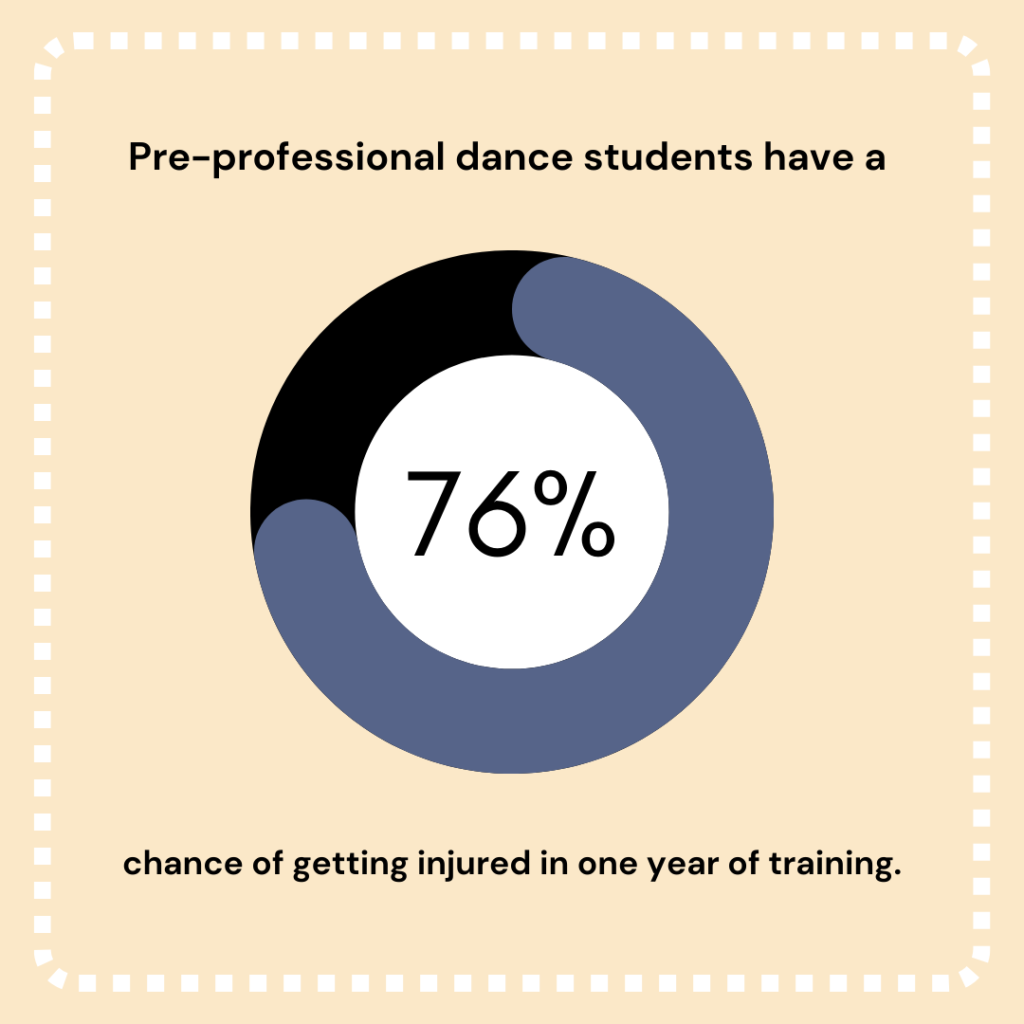
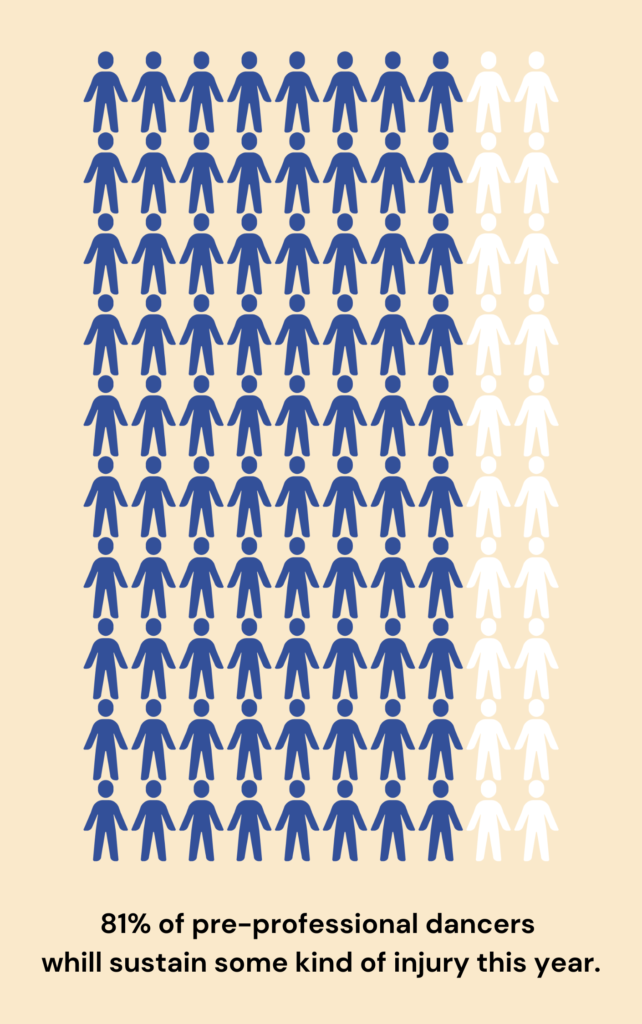
According to a study by Diana van Winden, a professional in Performing Arts Medicine, the one-year risk of injury incidence proportion was 81%, meaning that 8 out of 10 dance students sustained some kind of injury over the course of the one-year study, with 58% of those students sustaining a serious injury.
The study found that the leading causes of injury were “long hours of training hat consists of repetitive movements, pushing anatomical boundaries (eg, turnout, arching), and demanding versatility (eg, improvisation, inversions).”
According to the study, “Physical health problems can lead to discomfort, require medical treatment and inhibit artistic development due to absence from dance activities (ie, classes, rehearsals and performances). In extreme cases, they can lead to study delay and even dropping out of college.”
This is true in Gigi’s program. Because students are getting a degree in dance, and their degree depends entirely on their body, they often do not have something to fall back on. However, Gigi does not want to submit to this extreme case and drop out of college.

Instead, Gigi tries to keep an optimistic outlook on her situation. When she is not able to dance, she tries to sit in on classes and observe the technique of faculty and other students. Before her health conditions worsened this year, she considered herself an improvisational dancer who based choreography around leaps and giant movements. However, now, due to her likelihood of fainting, she focuses on stability in her dance technique. She incorporates more floor work and intentional movement. Her recent choreography focuses more on the upper body, with a stable lower body. Since she has been forced to reconcile her health with her dance career, she has gotten to understand the capabilities of her own body in dance. She also expressed gratitude for the opportunity to observe. Even though she is sometimes not able to participate in class, she is still surrounded by the creativity of other dancers, and this gives her strength to keep going. She works even harder to embrace the limitlessness of contemporary dance, even while engaging with her own physical limits.
Currently, Gigi is fighting to retain her enrollment in her dance conservatory program and change some of the protocols around health, wellness, and attendance. She hopes for a future in dance where faculty and professionals recognize dancers as “humans,” who have needs of their own and need grace and nurturing.

Gigi is considering a career switch to contemporary dance choreography. One day, she says, “when I am healthy and I’m whole and I’m healed, I can experiment with all the art that I got to digest over the time it took for me to heal.”
Sources:
https://pubmed.ncbi.nlm.nih.gov/23988783/